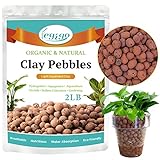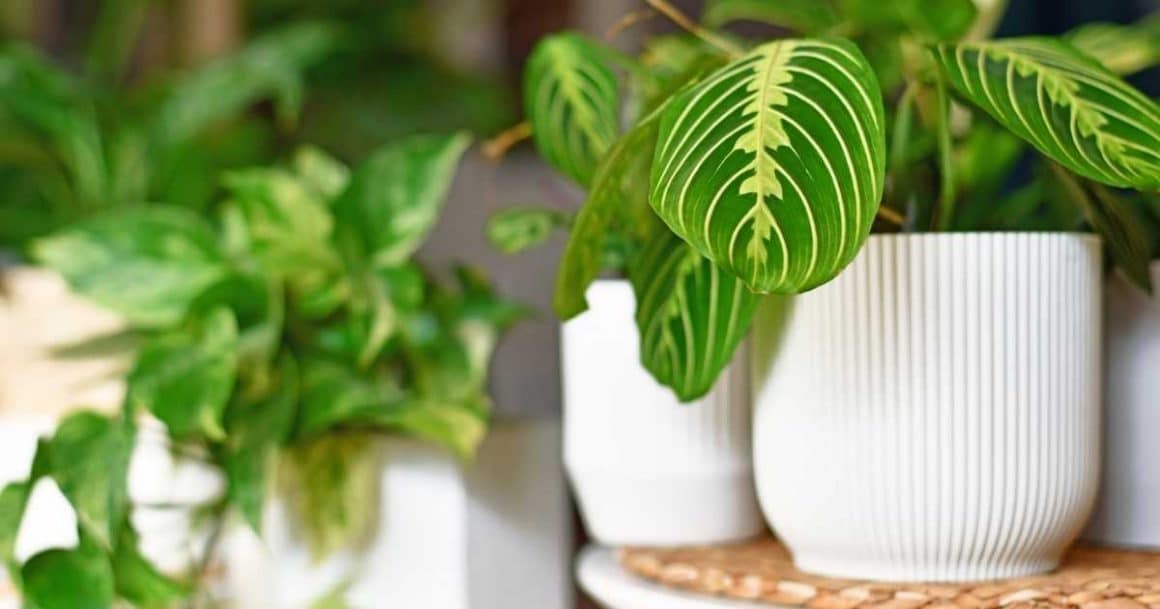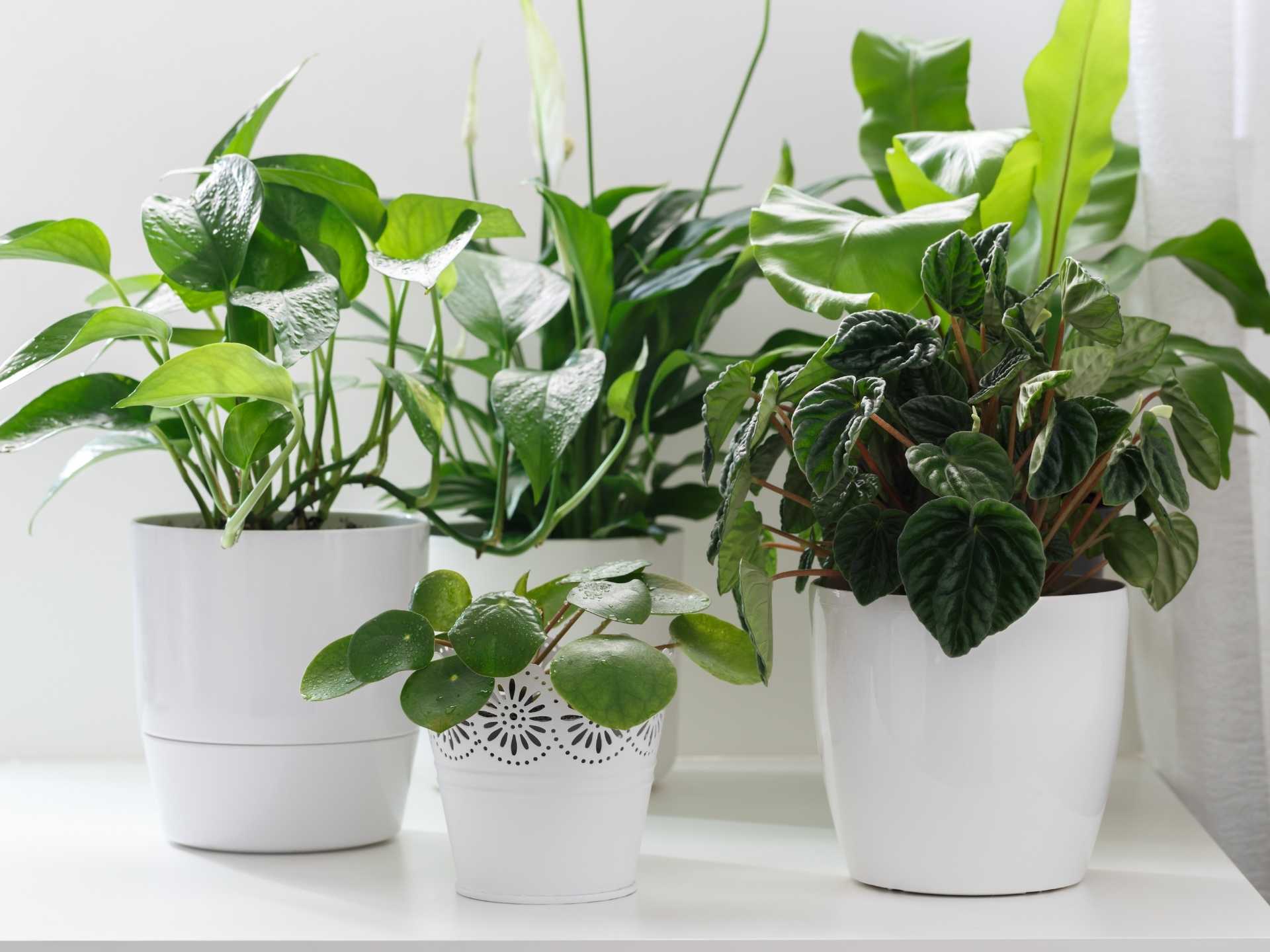How to Use LECA Clay Pebbles for Houseplants (5- Easy Ways!)
Welcome, plant enthusiasts! I’m so glad you are here to learn about LECA clay pebbles for houseplants!
I discovered these cute clay pebbles about a year ago and have become a huge fan! LECA clay pebbles are now a staple houseplant supply!
In this article, I will share some practical, clever ways to use LECA clay pebbles for along houseplants, including step-by-step instructions for each.
Sound like a plan? Let’s get started.
This post may contain affiliate links. Click to visit policies and disclosures
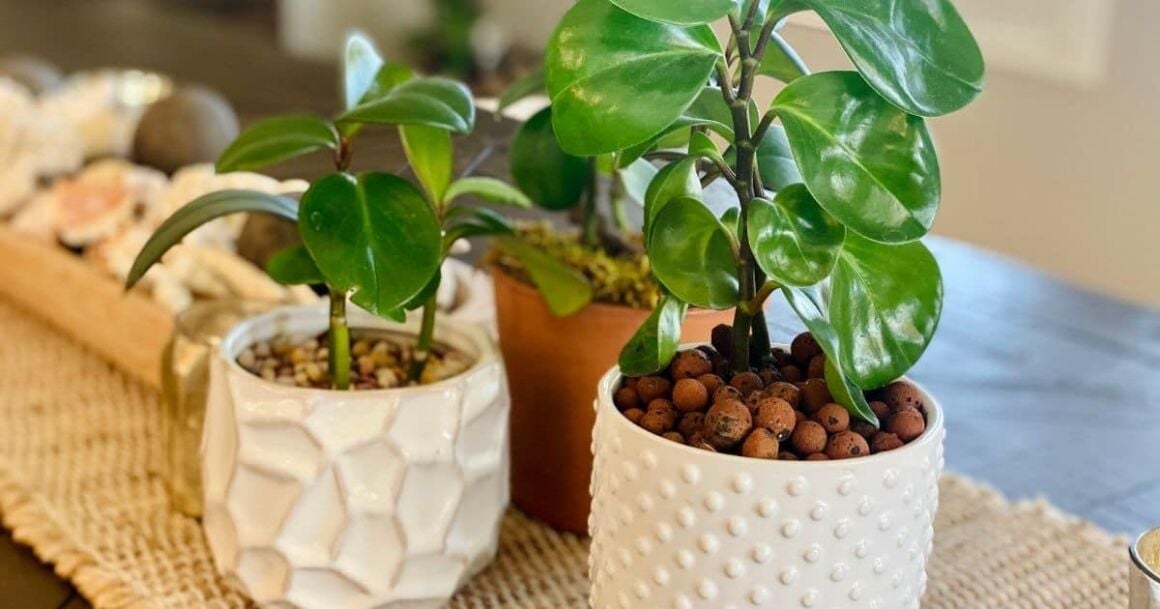
What is LECA?
LECA is an acronym that stands for Lightweight Expanded Clay Aggregate.
LECA is made from natural clay that’s mined, ground into finer particles, and then fired in rotary kilns. The firing process causes the clay to expand, resulting in lightweight, porous pellets.
The little clay pellets are typically brown to reddish-brown.
They are porous and lightweight, have a rough texture, and are filled with tiny air pockets, which make them excellent for water retention and aeration. (source)
Shop the Post: LECA Clay Pebbles for Houseplants
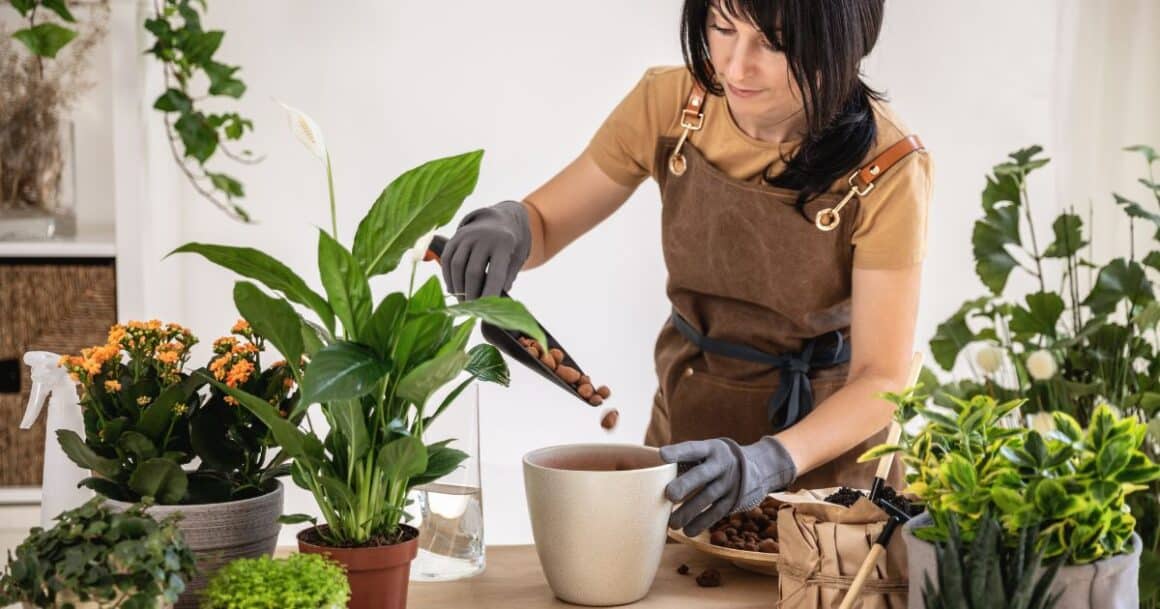
How to Use Leca Clay Pebbles for Houseplants
1. Use Clay Pebbles to Improve Drainage
LECA (Lightweight Expanded Clay Aggregate) is a great material to aid drainage when transplanting houseplants.
How to use LECA when transplanting houseplants:
Prepare LECA
Before using, thoroughly rinse the LECA pebbles under running water. This helps remove any dust or small particles from their surfaces. I also like to soak them for an hour or so to let them absorb water.
Select the Right Pot
Choose a pot with drainage holes for optimal results. If your decorative pot doesn’t have drainage holes, using LECA becomes even more critical to prevent waterlogging.
Create a LECA Layer
At the bottom of the pot lay down a layer of rinsed LECA pebbles.
Depending on the pot’s size, this layer can be 1 to 3 inches deep. This LECA layer ensures excess water drains away from the plant’s roots.
Add Potting Mix
Before placing the plant, add a small amount of your chosen potting mix over the LECA. This will serve as a buffer between the plant roots and the LECA layer.
Transplant the Houseplant
Carefully remove the houseplant from its current container. Gently shake off excess soil from its roots.
Position the plant in the new pot, ensuring it sits at the correct height.
Fill in with more potting mix around the plant, ensuring it’s planted at the same depth as it was in its original pot.
Optional – Mix LECA with Potting Soil
For plants that are particularly sensitive to overwatering, you can mix LECA pebbles directly into your potting mix at a ratio that suits your plant’s drainage needs.
This enhances aeration and drainage within the soil itself.
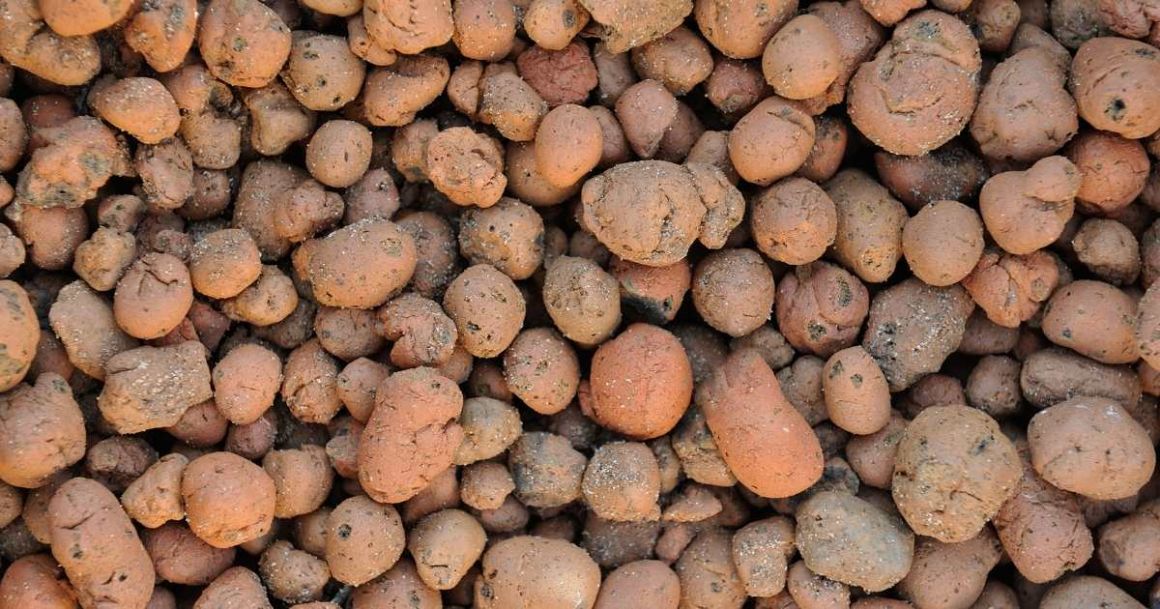
2. Use Clay Pebbles Instead of Soil.
Clay pebbles can be used as a growing medium instead of soil to grow indoor plants.
Using LECA instead of traditional soil can be beneficial for many indoor plants due to its excellent drainage capabilities and ease of maintenance. Growing plants in LECA, especially in a semi-hydroponic setup, can simplify care routines and reduce issues related to over-watering.
How to use LECA as the primary growing medium:
Clean LECA Balls
Thoroughly rinse the LECA balls under running water to remove any dust or fine particles. This helps in ensuring that the LECA is clean before planting.
Choose an Appropriate Container
It’s preferable to use a clear container or pot so you can easily see the water level and root growth. The pot should have drainage holes.
Planting in LECA
- Fill the container with a layer of rinsed LECA balls, roughly a third of the pot’s height.
- Remove the plant from its current pot and gently shake off as much soil as possible from the roots.
- Rinse the roots under lukewarm water to remove remaining soil particles.
- Place the plant’s roots into the container, spreading them out evenly.
- Fill the container with more LECA balls, ensuring the plant stands upright. Adjust the plant to your desired depth.
Watering and Nutrients
Fill the pot with water, but ensure the water level doesn’t touch the base of the plant. Ideally, the water level should be about a quarter to a third of the pot’s height.
Because LECA doesn’t provide any nutrients on its own, you’ll need to add liquid fertilizer to the water. However, use it at a reduced strength compared to the manufacturer’s recommendation (typically around half).
Check nutrient levels and adjust as needed for your specific plant.
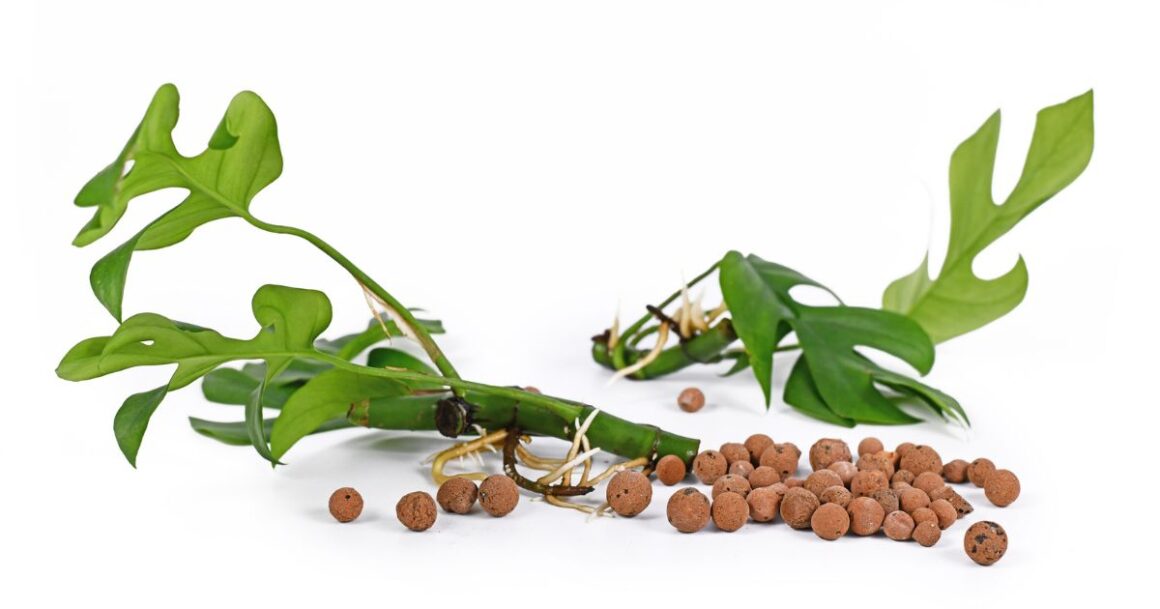
3. Propagate Houseplants Using Clay Pebbles
I learned how to propagate way back in the day from my Grandma, who had the greenest green thumb of anyone I’ve ever known.
She would gift cuttings from her plants to family and friends, a beautiful tradition I intend to keep alive.
That said, I have been propagating my houseplants for years. Propagating your indoor plants is rewarding, and you get FREE PLANTS out of the deal, so what could be better than that?!
Propagating using L.E.C.A is Easy!
- Pick a clear glass container.
- Take a cutting from a healthy houseplant
- Fill your container halfway with clay pebbles
- Add plant cutting
- Fill the container the rest of the way with clay balls
- Add distilled water to the top
- Add more water a few hours later
- Watch for roots in just a few days or weeks, depending on the plant
Related article: How to Propagate Plants in Water
4. Add Humidity to Plants Using Clay Pebbles
Using clay pebbles for houseplants is a fab way to boost humidity with minimal fuss. It’s a game-changer, especially for those moisture-loving plants.
How to use LECA to add humidity to houseplants:
- Give your LECA a quick rinse to shake off any dust.
- Fill a shallow tray or plant’s saucer with your rinsed LECA. Add water, but ensure the top pebbles stay dry.
- Set your tropical plants on this tray. Water evaporates from below the pebbles, creating a moist haven for your plants.
- Refill as needed, always keeping the top pebbles dry to prevent overwatering.
Plants that love extra humidity: (To name a few)
- All ferns
- Prayer Plants
- Spider plants
- Monstera
- Fiddle Fig Plants
- ZZ Plants
- Peace Lily
Related article: The Best Humidifiers for Plants
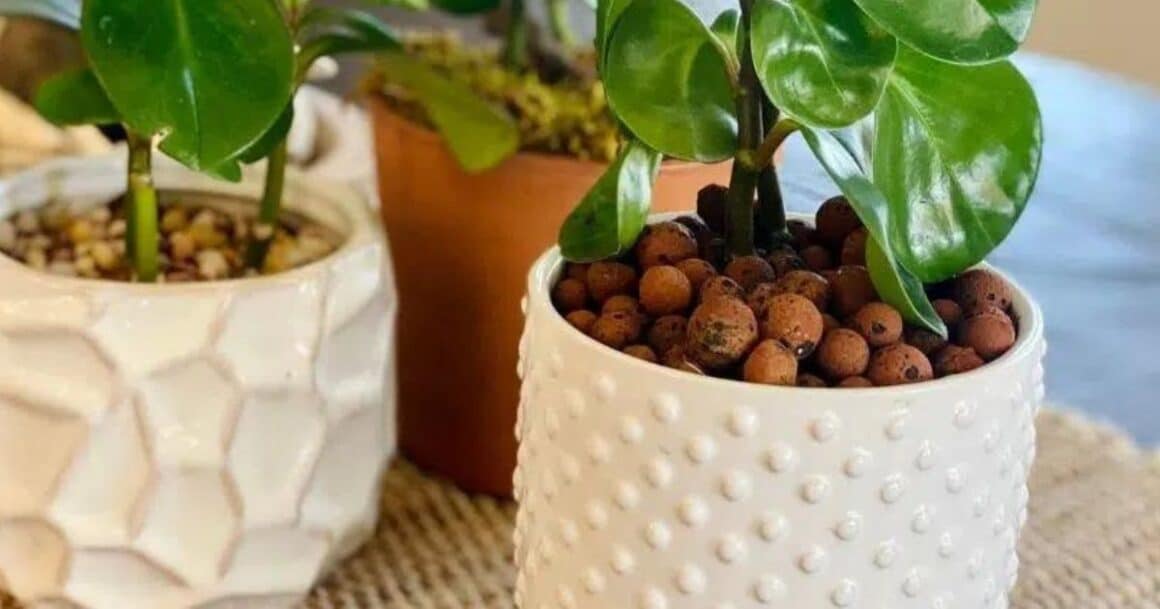
5. Use Clay Pebbles as a Soil Topper
Adding a soil topper to your indoor plants is always a great idea!
Add a fresh layer of sand, gravel, decorative moss, or clay pebbles to the top layer to control the moisture level on the top layer of the houseplant, which deters gnats from laying eggs.
Covering the top layer of the soil gives the houseplants a nice added/decorative touch, too!
Related article: How to get rid of fungus gnats forever!
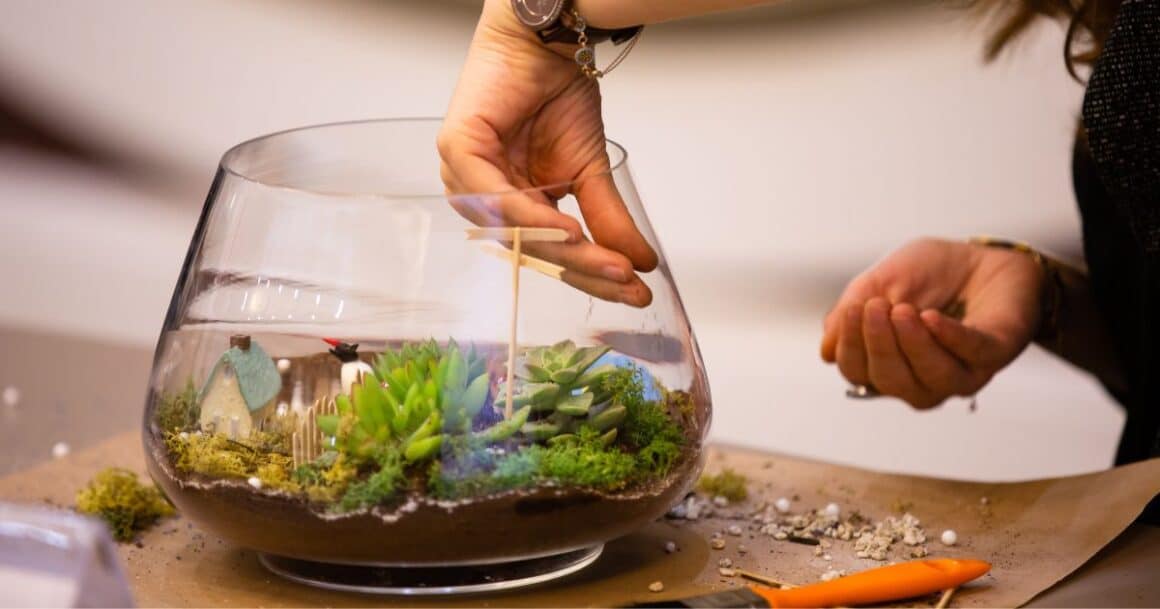
6. Use LECA Clay Balls in Terrariums
Benefits: LECA improves drainage, reduces root rot risk, and adds aesthetic appeal to terrariums.
Here’s how to use LECA in a terrarium:
- Clean LECA: Rinse LECA pebbles to remove dust.
- Prepare Container: Ensure it’s clean. Have a lid ready if aiming for a closed terrarium.
- LECA Layer: Add a 1-3 inch layer of rinsed LECA at the terrarium’s bottom for drainage.
- Barrier Layer: Place mesh or fine screen on top of LECA. This keeps soil from mixing into the LECA. Optionally, a thin layer of sphagnum moss or activated charcoal can be used instead.
- Substrate: Add 2-4 inches of potting mix tailored for your chosen plants.
- Plant: Position your plants in the substrate.
- Water: Lightly moisten, ensuring excess drains to the LECA layer.
- Position: Place the terrarium based on your plants’ light needs. Avoid direct sunlight for most plants.
Shop the Post: LECA Clay Pebbles for Houseplants
FAQs: LECA Pebbles for Houseplants
What are LECA pebbles, and how are they made?
LECA pebbles are made from natural clay heated in a rotary kiln until it expands. This results in lightweight, porous, round pellets perfect for hydroponics and houseplant growth.
Why use LECA pebbles for houseplants instead of regular soil?
LECA offers superior drainage, prevents over-watering, and minimizes the risk of root rot.
They also provide stable support to the plant and reduce the chances of soil-borne pests and diseases.
How do you prepare LECA pebbles for plant use?
Before use, it’s recommended to rinse LECA pebbles thoroughly to remove any dust. Then, soak them in pH-balanced water for at least an hour to prepare them for plant use.
How often should I water plants in LECA?
The frequency depends on the plant’s needs, but generally, plants in LECA require watering when the top 1-2 inches of pebbles are dry. Always ensure there’s some water at the bottom of the container for the plant’s roots to access.
Can all plants be grown in LECA?
While many houseplants thrive in LECA, some plants prefer traditional soil. Before transferring, research your specific plant’s needs and consider starting with a cutting or a less valuable plant if you’re new to LECA.
How do I fertilize plants grown in LECA?
Plants in LECA require liquid hydroponic fertilizer since they won’t get nutrients from soil. Always follow the manufacturer’s recommendations for dosage.
Is mold on LECA pebbles a cause for concern?
Mold can sometimes appear with too much moisture and insufficient air circulation. If mold appears, reduce the watering frequency and ensure the container has proper ventilation.
Should I boil LECA?
It’s not a must, but it’s a good idea!
Boiling LECA can help to remove any impurities, dust, or potential contaminants. Plus, boiling can help saturate the pebbles, making them initially more efficient at retaining water.
Here’s a quick step-by-step:
- Rinse First: Give your LECA a preliminary rinse to remove loose dust.
- Boil Away: Pop them into a pot of water and boil them. Let them simmer for about 10 minutes.
- Cool Down: After boiling, let them cool off and give them another quick rinse.
Do LECA pebbles degrade or break down over time?
LECA is durable and doesn’t degrade quickly like organic materials. However, they might break down slightly over time, especially if moved or disturbed often.
Where can I buy LECA pebbles?
LECA pebbles can be purchased at most garden centers, hydroponic stores, or online retailers like Amazon.
Related Articles:
- How to Grow Healthy Houseplants
- The Best Indoor Plant Fertilizer
- Ultimate Guide to Dwarf Fiddle Figs
- How to Transplant a Fiddle Fig
- The Best Water for Indoor Plant
- Best Apps for Plant Lovers
- 50+ Quotes for Plant Lovers
- Using NEEM Oil for Houseplants
- Best Plant Care Apps
- How to Kill Fungus Gnats Indoors
- How to Propagate Houseplants in Water
- Easy + Fast Growing Houseplants
- The 15 Best Herbs to Grow in Arizona
Conclusion: How to Use Clay Pebbles for Houseplants
Alright, fellow plant lovers, let’s wrap up my post about those nifty little clay pebbles for houseplants.
LECA, or as we love to call them, those magic clay pebbles, are a must-have addition to any plant mama’s bag of tricks.
They’re a game-changer, especially if you’ve been facing over-watering woes, drainage dilemmas, or even those pesky fungus gnats.
Plus, they’re fantastic for giving your plant pots a neat look and for securing those baby plant cuttings when you’re propagating.
We all know that the joy of gardening is in the journey and the learning.
So, with LECA in hand, you’re not just adding another tool to your collection but a sprinkle of fun experimentation.
Why not try some clay pebbles for your houseplants? Go on, give it a whirl!
Until next time- Happy gardening! 🌿
XO, Christine

I’ve been keeping it real since 1963. 😊
I’m a child of God, devoted wife, proud mama and grandma, full-time creative, domestic engineer, and passionate self-care enthusiast.
I’m purpose-driven and do my best to live each day with intention—whether shopping for treasures, painting in my art studio, digging in the garden, or cooking up something yummy for my family.
I’m always up for a good chat and love collaborating with fellow creatives and brands.
Let’s connect—don’t be shy!

